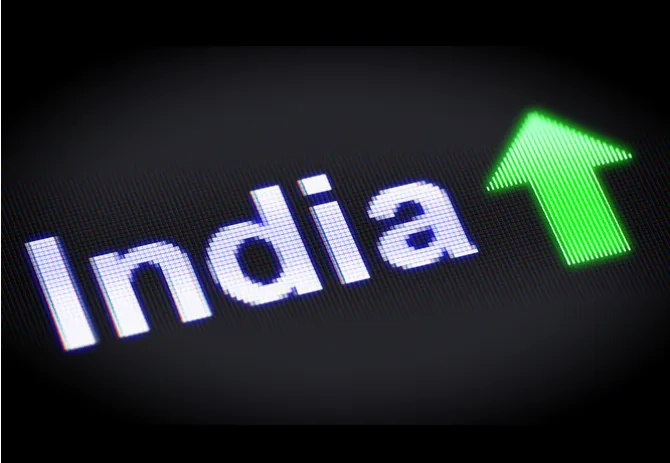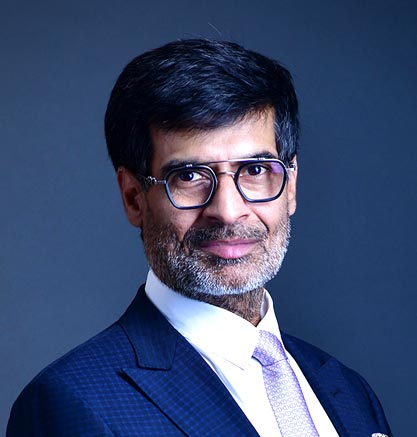-
CENTRES
Progammes & Centres
Location
Today, India is poised at the moment and GDP that China was in in 2007. Does it have the same gumption?

In 2007, China’s GDP was about $3.6 trillion. Today, India’s GDP is $3.7 trillion — perhaps more. This parallel is crucial to understanding the big moment that Indian diplomacy, led by Prime Minister Narendra Modi, is recognising. A moment, if supported by India’s people, its companies and the state apparatus, will reshape the global order. An appreciation of this moment and putting its lessons into concrete actions is the big legacy of 2023 as India concludes a transformational diplomatic year — the year of its G20 stewardship.
Look back at history. In 2007, China was not yet the geoeconomic behemoth it is now. But with a GDP lower than India’s today, it became the go-to nation during the global financial crisis a year later. Every nation sought to deepen relations with Beijing, and to create a special place in their diplomacy for the People’s Republic. Its leaders were the toast of Davos and at business salons. China provided institutional and geoeconomic responses — a development bank, a cross-continental lending programme that galvanised infrastructure accretion without the legacy constraints of Western agencies, and a series of economic projects that eventually coalesced into the Belt and Road Initiative.
It is true that some of these have run into trouble. Nevertheless, the fact is China used its economic promise in 2008 to gain oversized economic and political influence that continues to stand it in good stead. It did this by offering itself as a vital additionality to the global order. At a time when the US was struggling to recover from the financial crisis and the Eurozone was tearing itself apart, it was China that promised stability and economic dynamism. The world wanted and needed an additional engine of growth and an additional source of investment. And so it also welcomed an additional centre of geopolitical power.
India is poised at a similar moment and with a similar GDP. Does it have the same gumption? As we enter 2024, this is the framework within which Indians must understand their place in the world today. The recent past teaches us that an India-sized economy of about $4 trillion can exert a huge influence. With vision and skilful diplomacy, it can carve a space for itself alongside economies that are four or five times large, like the United States, the European Union and China.
This is a real Indian opportunity in 2024, as Europe stagnates, the US turns inward and China deals with internal problems and its share of the global economy that is shrinking in nominal terms. The agenda for India’s next government must simply be this: Demonstrate India’s potential, and the additionality that it can provide for global growth, institutions, and security.
Additionality does not require extraordinariness. After all, China’s growth in recent years has not been extraordinary. But it had momentum, and that is what India has today. It has its own trajectory and the motive force, one better suited to a green and digital future. If China had mass manufacturing, the growth engine of the 2010s, India has its platform economy, the dynamo of the 2020s.
But additionality must have attributes. What Beijing offered 15 years ago was not an inchoate promise. There was a system, a schema, to the China proposition. This roadmap excited China’s partners. An entire future-focused architecture served as the loudest possible announcement that a $4-trillion economy would punch with the weight of a $15-trillion one.
Together with like-minded partners, India needs maps plotting priority infrastructure, connectivity routes, business and trading hubs and developmental projects. It needs to do this boldly and determinedly, identifying vital regions and sectors where it will resolutely plant the Tricolour. 2024 is the year for inking a world map described by India’s vision for its role in the world.
Also, a new cooperation architecture needs to be put in place because India, in a very short while, will be spending serious money globally. The private sector is mobilising to support connectivity, supply chains, and resource resilience projects across the world. But public development finance will also grow alongside, and indeed, faster than India’s economy.
This is the substance behind India’s additionality. Even if we assume India grows at only 10 per cent a year in current dollars, below its recent benchmark, it will be a major new source of development finance. If India slowly but steadily raises its development cooperation budget to less than 0.5 per cent of its GDP by 2030, it will still have put around $70 billion into the global system. India is already the voice of the Global South; it will become the bank of the Global South.
This finance needs to be undergirded by India’s unique proposition, its own roadmap, and its own offering to the world. It urgently needs an outward-focused development finance corporation that can catalyse projects globally. It needs a bank, its own version of the China Development Bank, that will focus on global corporate needs beyond just trade finance. And it needs an imagery that is understood by others.
If India slowly but steadily raises its development cooperation budget to less than 0.5 per cent of its GDP by 2030, it will still have put around $70 billion into the global system. India is already the voice of the Global South; it will become the bank of the Global South.
India’s government has shown this ambition at home. The Prime Minister’s Gati Shakti initiative links disparate infrastructure projects with a common vision. Similarly, we need an external engagement approach. Together with like-minded partners, India needs maps plotting priority infrastructure, connectivity routes, business and trading hubs and developmental projects. It needs to do this boldly and determinedly, identifying vital regions and sectors where it will resolutely plant the Tricolour. 2024 is the year for inking a world map described by India’s vision for its role in the world.
This commentary originally appeared in The Indian Express.
The views expressed above belong to the author(s). ORF research and analyses now available on Telegram! Click here to access our curated content — blogs, longforms and interviews.

Samir Saran is the President of the Observer Research Foundation (ORF), India’s premier think tank, headquartered in New Delhi with affiliates in North America and ...
Read More +